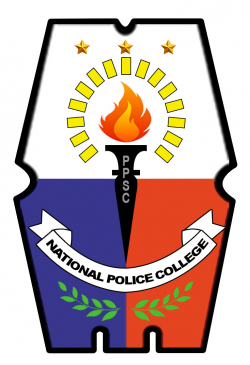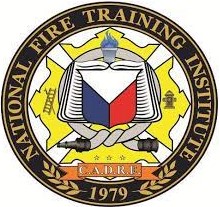PAG-AMPING SA KADAGATAN: BASIS FOR STANDARD OPERATING PROCEDURES FLOW OF THE PNP MARITIME GROUP AND THE PHILIPPINE COAST GUARD IN CONSERVATION AND MANAGEMENT MEASURES

Type
Thesis
Authors
PLTCOL MARY CRYSTAL B. PERALTA ( CG CDR MARK LARSEN N. MARIANO )
Category
PSOSEC
[ Browse Items ]
Publication Year
2024
Abstract
The Philippines is an archipelagic country composed of 7,107 islands with vast coastlines, rich coastal and marine areas, and bountiful marine resources. These resources support the sustainable livelihood of all Filipinos and address the crucial national security component of food security. The Philippines’ seas have been extensively utilized by local and commercial fishing communities, including Cebu. In response to the escalating threats to marine environmental protection and maritime security, the Republic of the Philippines has established various offices and agencies with the primary responsibility of safeguarding the maritime domain. Notably, the PNP-Maritime Group and Philippine Coast Guard have closely collaborated with the Bureau of Fisheries and Aquatic Resources (BFAR) under RA 8550, which emphasizes their roles and responsibilities under Section 124.
The qualitative study conducted focused group discussions (FGDs) in Cebu City and subsequent key informant interview (KIIs). The study identified themes such as mechanisms, the lived experiences of the men and women of the Philippine Coast Guard and the PNP-Maritime Group, as well as recommendations for amending RA 10654.
The study underscored the need for establishing an impounding area at the local government unit (LGU) level, jointly utilized by the PCG, PNP-Maritime Group, BFAR, and the DENR. This impounding area would house confiscated vessels and fishing gear used for litigation purposes, located in as safe and secure location, free from threats of force majeure and pilferages. It highlighted the importance of timely training and certifications for the PCG, PNP-Maritime Group, and Bantay Dagat to be deputized as fishery examiners, authorized to conduct market denial operations and to initially evaluate suspected catches before confirmatory tests conducted by the registered laboratory of the Bureau of Fisheries and Aquatic Resources. Additionally, the study recommended the installation of secured communication lines for the PCG, PNP-Maritime Group and BFAR to shield them from political influence and harassment throughout the process of arresting and prosecuting violators of fishery laws. The study also called for the establishment of an institutionalized command center for collaboration and surveillance meetings among the BFAR, PCG, and PNP-Maritime Group. It suggested rotational designation of project team leaders for joint operations between the PCG and PNP-Maritime Group. An adoption of an operational mechanism/workflow mechanism was proposed to enhance protection, safety, and care for all personnel involved in seaborne patrol, surveillance, and joint operations, including the PCG, PNP-Maritime Group, BFAR, DENR, and DA. The study advocated for empowering the PCG to act as an arresting/apprehending officer and proposed the full membership of the PCG and PNP-Maritime Group in fishery and aquamarine resources management councils at the provincial, regional, and national levels.
The study put forward a new standard operating (SOP) flow for replication beyond the province of Cebu, to be jointly implemented by the PCG and PNP-Maritime Group.
The qualitative study conducted focused group discussions (FGDs) in Cebu City and subsequent key informant interview (KIIs). The study identified themes such as mechanisms, the lived experiences of the men and women of the Philippine Coast Guard and the PNP-Maritime Group, as well as recommendations for amending RA 10654.
The study underscored the need for establishing an impounding area at the local government unit (LGU) level, jointly utilized by the PCG, PNP-Maritime Group, BFAR, and the DENR. This impounding area would house confiscated vessels and fishing gear used for litigation purposes, located in as safe and secure location, free from threats of force majeure and pilferages. It highlighted the importance of timely training and certifications for the PCG, PNP-Maritime Group, and Bantay Dagat to be deputized as fishery examiners, authorized to conduct market denial operations and to initially evaluate suspected catches before confirmatory tests conducted by the registered laboratory of the Bureau of Fisheries and Aquatic Resources. Additionally, the study recommended the installation of secured communication lines for the PCG, PNP-Maritime Group and BFAR to shield them from political influence and harassment throughout the process of arresting and prosecuting violators of fishery laws. The study also called for the establishment of an institutionalized command center for collaboration and surveillance meetings among the BFAR, PCG, and PNP-Maritime Group. It suggested rotational designation of project team leaders for joint operations between the PCG and PNP-Maritime Group. An adoption of an operational mechanism/workflow mechanism was proposed to enhance protection, safety, and care for all personnel involved in seaborne patrol, surveillance, and joint operations, including the PCG, PNP-Maritime Group, BFAR, DENR, and DA. The study advocated for empowering the PCG to act as an arresting/apprehending officer and proposed the full membership of the PCG and PNP-Maritime Group in fishery and aquamarine resources management councils at the provincial, regional, and national levels.
The study put forward a new standard operating (SOP) flow for replication beyond the province of Cebu, to be jointly implemented by the PCG and PNP-Maritime Group.
Number of Copies
1
| Library | Accession No | Call No | Copy No | Edition | Location | Availability |
|---|---|---|---|---|---|---|
| NPC Library | 676827 | 1 | Yes |




